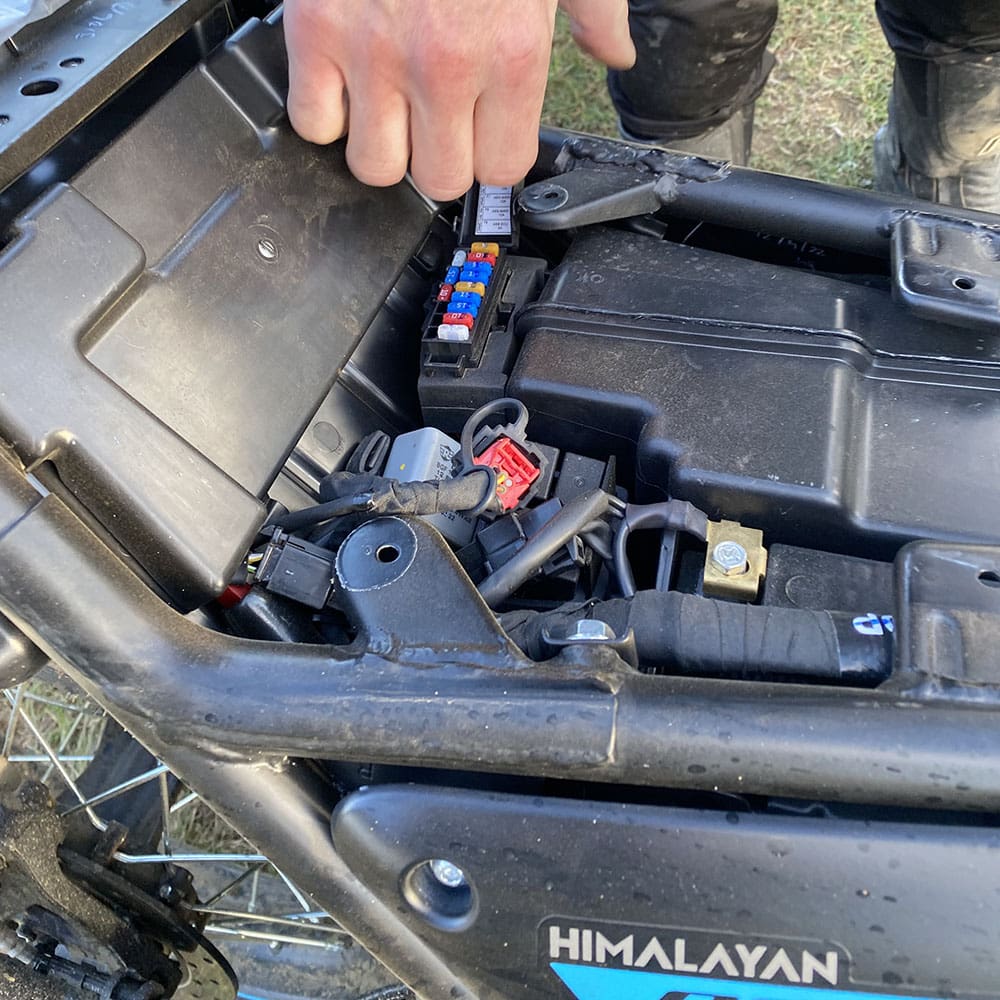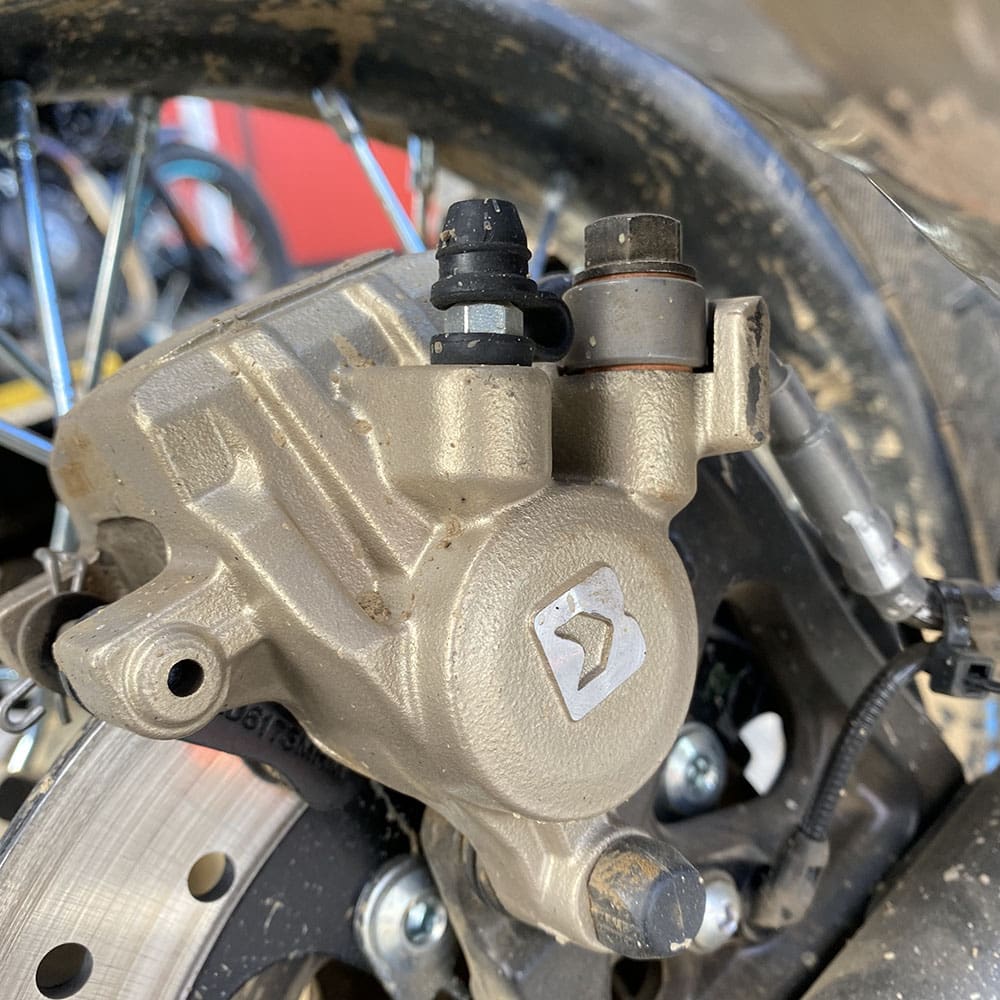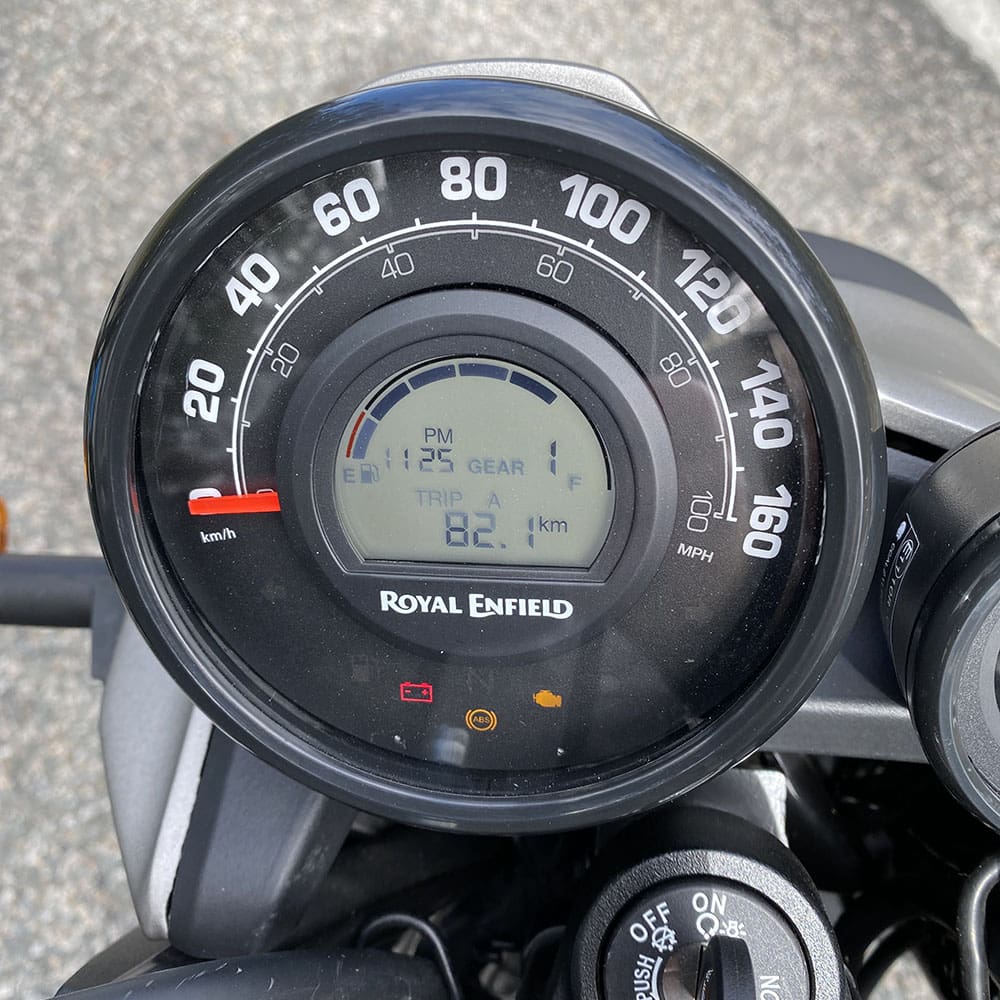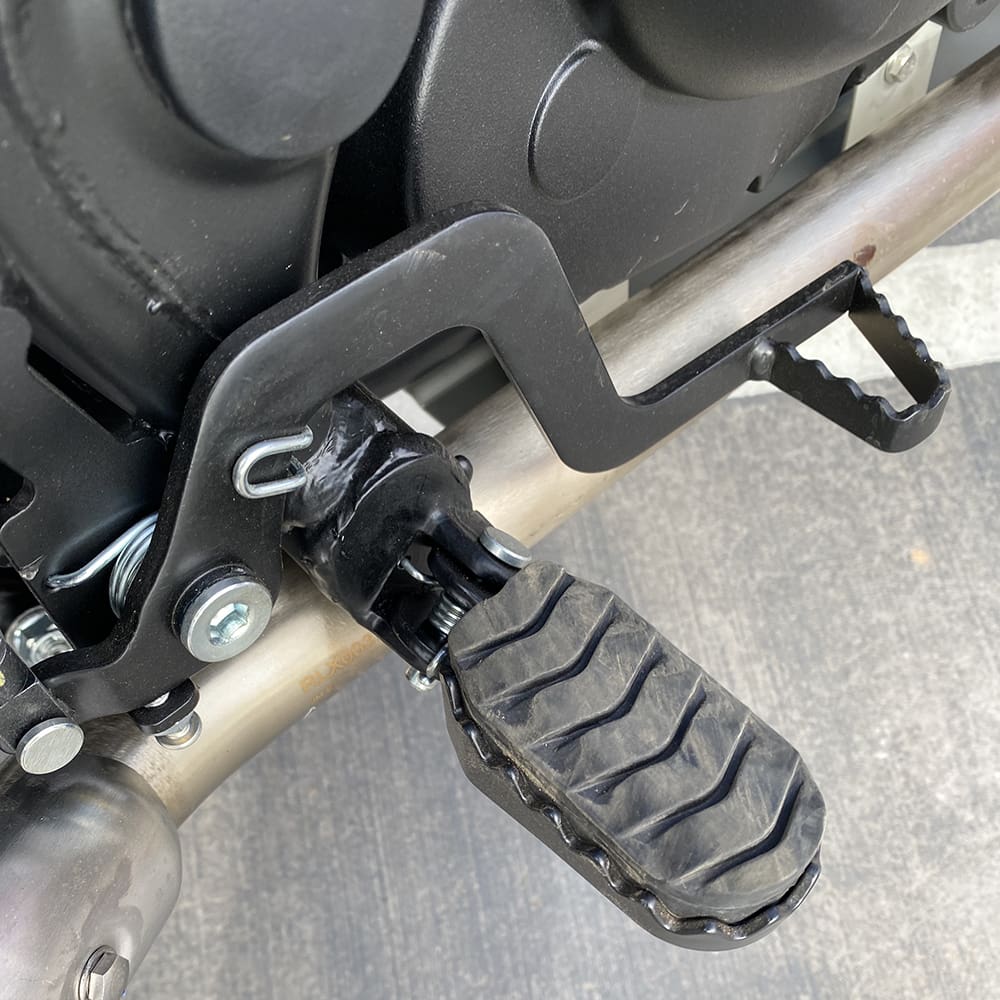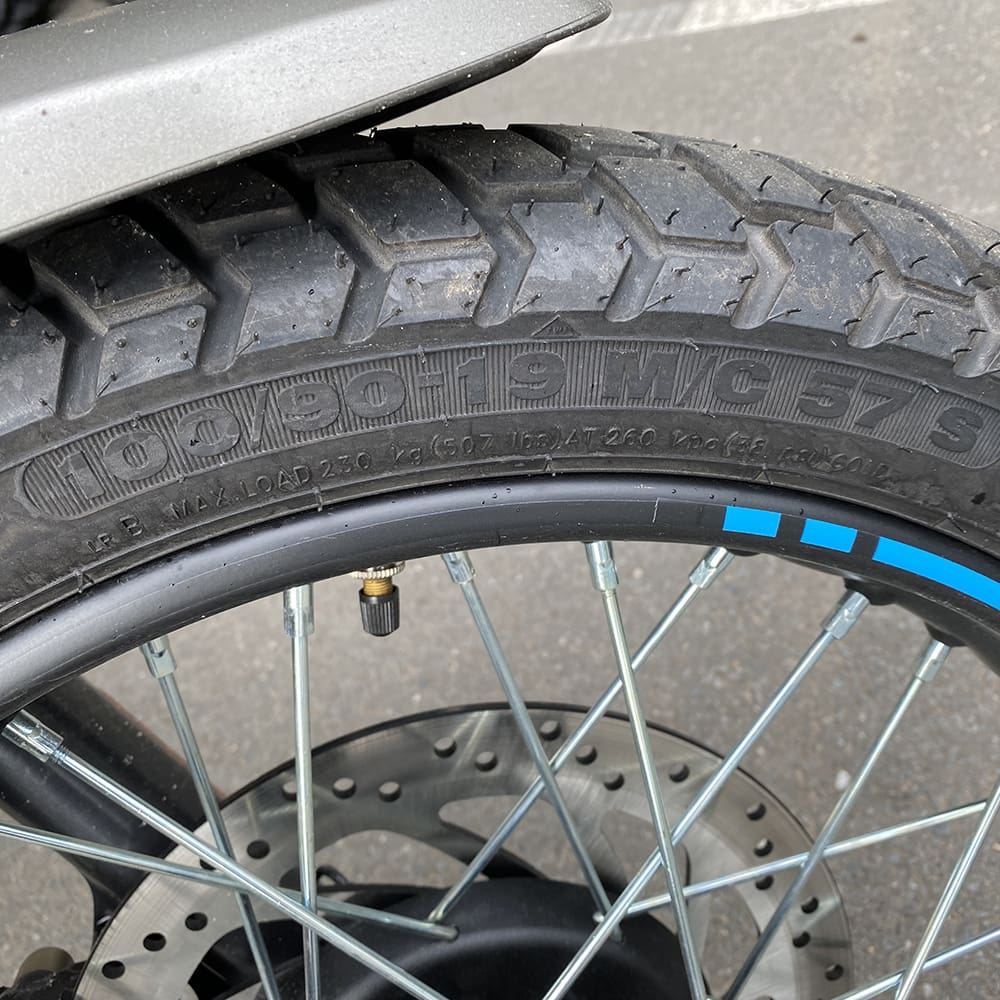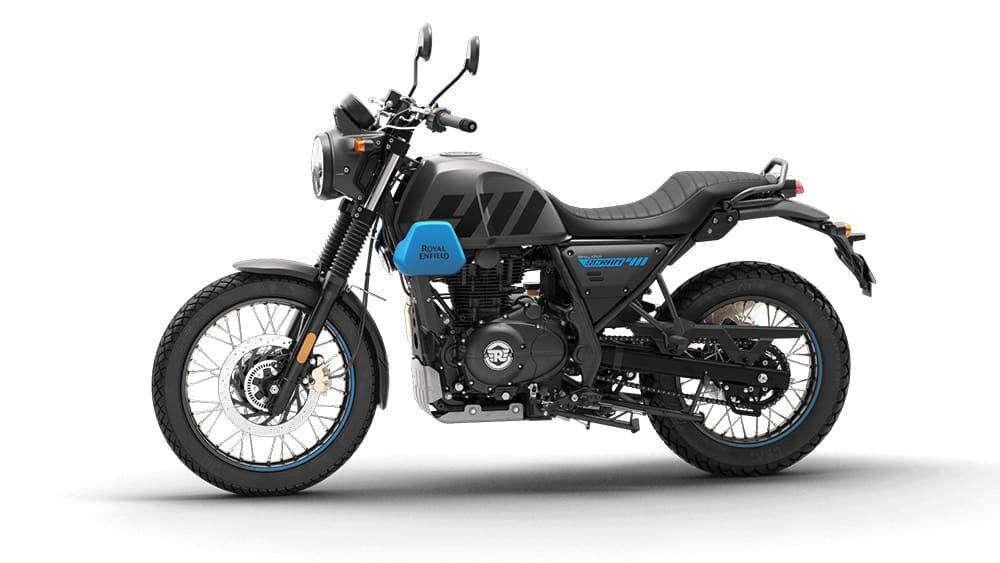For those after a simple and affordable all-rounder, Royal Enfield reckons it has the answer with its new Scram 411 ‘street scrambler’.
![]()
Street scrambler is a fitting tag for the new Royal Enfield Scram 411, a bike allegedly designed for those who tackle the urban jungle throughout the week but who want to use the same machine to escape it on the weekends.
Based on the brand’s midsize Himalayan adventure tourer, the obvious visual differences with the Scram include the deletion of the touring screen, high-mount front guard and front carrier racks, as well as the fitment of a 19-inch front wheel instead of the Himalayan’s more off-road biased 21-incher. Other visual giveaways include the Scram’s unique headlight surround, its nifty little side covers and the fitment of a one-piece seat.
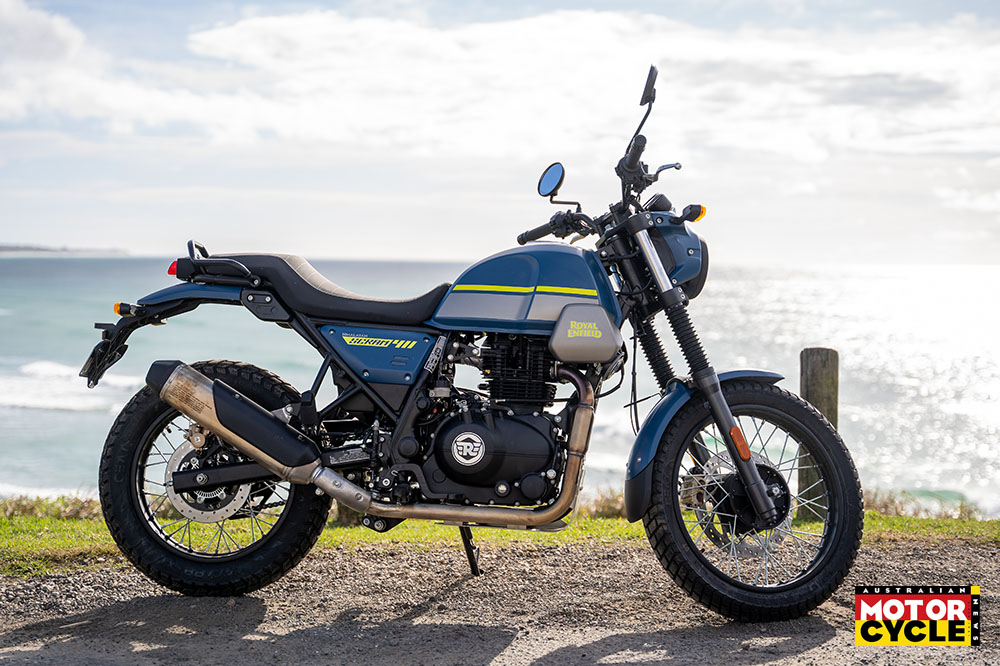
Mechanically, both bikes are very similar, running the same half-duplex split cradle frame, the same Euro 5-compliant 411cc air-cooled single-cylinder engine, and the same five-speed gearbox. Mechanical differences? The Scram runs on slightly lower suspension with 10mm less travel up front, which sees ground clearance reduced to 200mm, and its seat height is 5mm lower at a very accessible 795mm. Whereas the Himalayan gets switchable ABS, you’ll have to pull the ABS fuses on the Scram if you want to lock up wheels in the dirt. Finally, thestripped-down Scram is 6kg lighter than the Himalayan.
Being so mechanically similar, you might wonder why Royal Enfield bothered with the Scram at all, but the result is different enough visually to the Himalayan that it opens this platform to a whole new market. And RE reckons the Scram market will be a much younger one than the Himalayan’s; at the May 2022 media unveiling of the Scram 411 attended by AMCN, Anuj Dua, RE’s Business Head for Asia Pacific markets said, “The Scram 411 will find a sweet spot in the midsize segment. The globally lauded versatility and competence of the Himalayan inspired us to reimagine the motorcycle in a more young, modern-day urban context.”
The Himalayan has been a successful machine for RE, and there’s no doubt the Scram will also sell well. After all, at $8240 (ride away) the Scram 411 represents great value for money, and to prove it meets its design brief, the recent launch ride started off in an urban environment before breaking out on to country backroads for a ride loop that ended up with a session on the fabulous natural-terrain track at Queensland Moto Park (QMP) near Coulson, Qld.
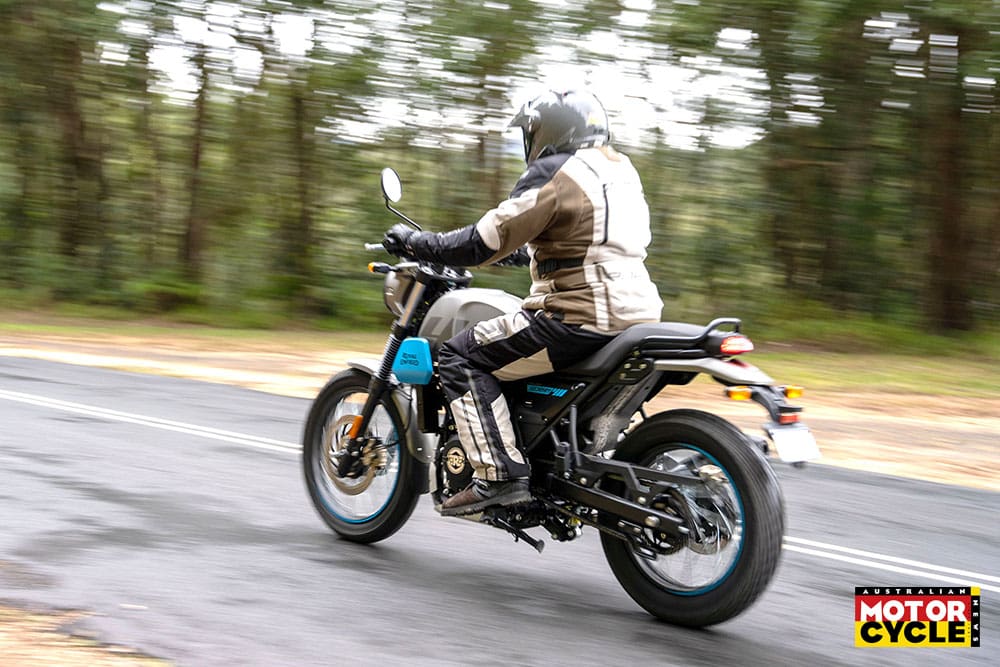
Starting with the urban ride, the slightly lower suspension and seat height of the Scram is immediately noticeable when you hop aboard, and even with my short legs, planting both feet on the ground was easy. The seat is narrow where it meets the tank and it kicks up at the rear, which makes you feel like you’re sitting in the bike rather than on top of it. Controls are basic and straightforward, and the twin-clock setup features an analogue speedo with an LCD readout for fuel level, gear position, clock, odo and tripmeters on the main gauge, and Royal Enfield’s Tripper Navigation on the smaller gauge, which requires you to download the RE Tripper app and connect your phone via Bluetooth for turn-by-turn navigation. I’ve used Tripper before and once set up it’s a very effective navigation tool.
The only adjustment to make before setting off on the ride was to lift the gear lever to suit my adventure boots; there is no brake or clutch lever adjustment, although the average span will suit most riders. After hitting the starter, the single quickly settles into a smooth idle. The Euro 5 exhaust takes most of the fun out of the exhaust note but as revs climb there’s enough volume there to enjoy when you open the throttle. RE had a Staintune-equipped Scram at the launch and it sounded like any big thumper should, but this set-up will only be suitable for off-road use.
The clutch is light and progressive, and the gearbox shifts smoothly with a good spread of ratios for riding around town between first and fourth; first gear is low and well suited to crawling along in heavy traffic, then there’s a sizeable jump up to second gear, while third and fourth are where it’s at for most riding up to around 80km/h; you’ll rarely shift into the tall fifth gear until out on the open road.
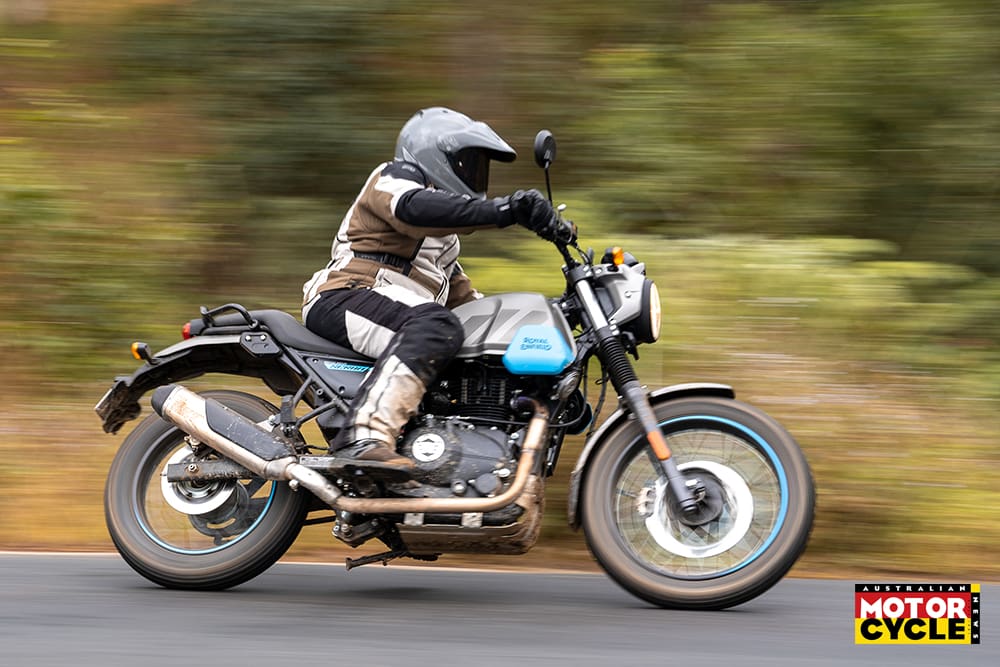
The compact Scram is easy to manoeuvre in small spots and the turning circle is great for threading your way through traffic or for chucking tight U-turns. Acceleration from standstill can hardly be described as scintillating – there’s only so much you can do with 17.9kW and 32Nm – but the character of the 411cc single makes the Scram an enjoyable ride nonetheless. There’s reasonable pulling power from down low and the big flywheel effect makes it almost impossible to stall the Scram’s engine when poking along at low revs, regardless of whether you’re riding through city traffic or climbing over obstacles on dirt tracks.
Midrange response is good in the lower gears too, and a good spread of torque means there’s not much point in winding out the engine to the rev limiter.You’re better off making the most of that midrange torque and short shifting through the ratios.
The only suspension adjustment is rear preload, and although quite firm, there’s plenty of wheel travel on offer, both front and rear, so if you want to hop over speed humps or ride over roundabouts the Scram offers a good combination of control and comfort. It’s light, too, and with a 19-inch hoop up front and skinny tyres at both ends, the Scram tips into corners quickly with little more than a nudge on the handlebar.
Once out on the open road, the Scram will happily cruise along at 110km/h, so long as you plan head for inclines and get ready to downshift early if you want to maintain your speed. If you don’t, you’ll need to drop back a cog or two and explore the upper part of the rev range, at which point the engine gets a bit vibey, but not excessively so. Top speed? On one downhill run in top gear I saw about 130km/h on the speedo, and that’s all she wrote.
The Scram runs a single 300mm disc up front gripped by a Bybre twin-piston caliper, and a 240mm disc down the back with a single-piston caliper, and the stoppers work well enough for the performance of the Scram, but feel at the lever/pedal could be better. Having said that, the Bosch ABS works well, and it doesn’t get too excited every time you brake hard, even in the wet.
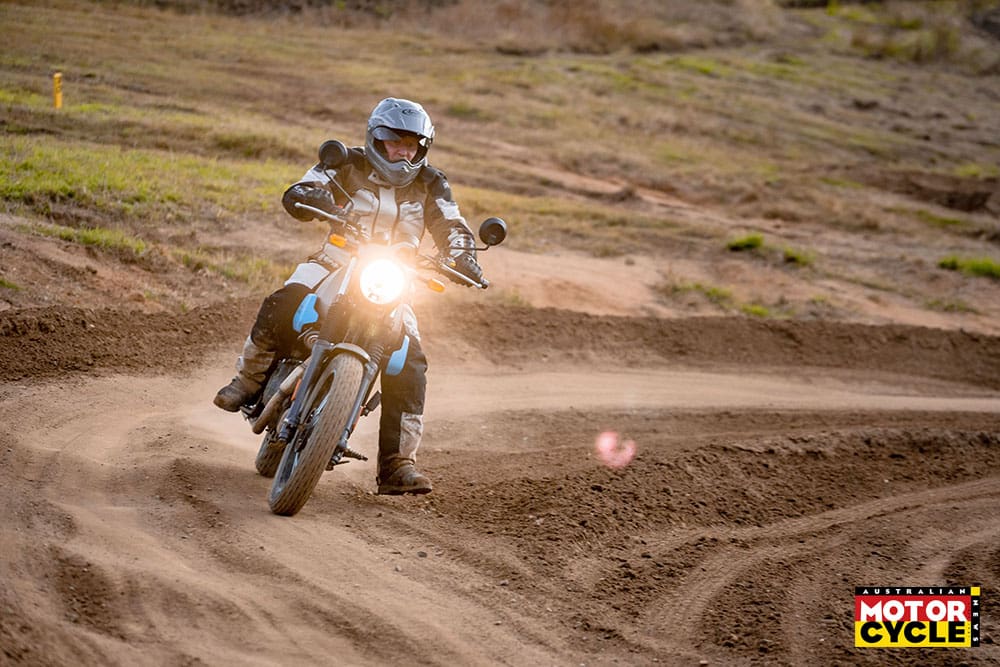
The Scram tips into corners willingly on the open road and it’s easy to adjust your line if you need to. The suspension is compliant enough to soak up mid-corner bumps without throwing the Scram around, and there’s more than enough ground clearance when pushing on through tight corners. The CEAT Gripp-XLH tyres worked well enough in the dry, but they didn’t inspire a lot of confidence on wet roads, and I had a couple of minor moments when riding over mud and debris mid-corner. Having said that, they are a dual-purpose tyre, and the open tread blocks are design to offer grip in the dirt and mud as well as on the road, which is something we got to test on this launch ride when we arrived at QMP.
I could hardly wait to get out on QMP’s natural terrain track on the Scram, which is a bit like a motocross track but without the huge jumps. The last time I was here about 10-years ago, I managed to crash, so I paid close attention to the lines Royal Enfield-sponsored flat-track racer Josh Farrell showed us on our out lap. While the Scram is no MX machine, it was well suited to this track, with its combination of berms, drop-offs, small jumps and rutted corners. In fact I was having so much fun, I lost count of how many laps I’d done by the time the sun had set.
What did I learn about the Scram at QMP? It’s more capable on the dirt than you might think. Sure, it doesn’t have the wheel travel of a dedicated off-roader, nor the ground clearance, but you can still jump it without bottoming out; in deep ruts I ran out of ground clearance on a few occasions, but the underside is protected by an alloy bash plate. The footpegs’ generous base provides plenty of support, and with their rubber inserts removed their teeth provide plenty of bite. The stand-up riding position is also comfortable, without too much of a stretch down to the handlebar, while the narrow fuel tank is easy to grip with your knees.
The 411cc single gets its power down in a tractable fashion, even when running road pressures in the tyres. More power would be nice, and on this track first gear was a bit low and second a bit tall, but there’s enough on tap to get the rear-end sliding around in corners.
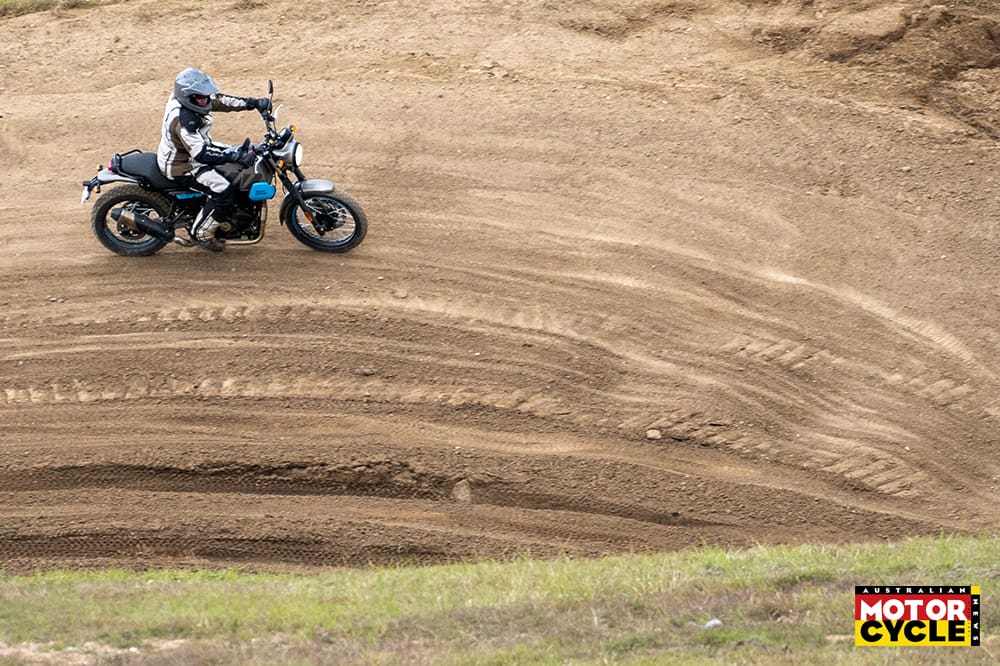
The Scram steers well on the dirt and with the ABS and wheel-speed sensor fuses pulled, you can lock up the rear into corners to get it pointed where you want it. Knobbies would obviously have provided a lot more grip, but the CEAT Gripp-XLH rubber proved a pretty good compromise.
At the end of, oh… I don’t know, about a thousand laps, I was thirsty but not totally knackered. I reckon had I been out there on a more powerful dirtbike I would’ve been exhausted by the end of the day (or injured), which just goes to show how easy the Scram 411 is to ride… both on the road and off it.
There are plenty of tie-down points on the back of the Scram and not much bodywork to scratch. The rear seat is also generous enough for decent stints with a pillion, although riding two-up would obviously knock the performance around a fair bit.
When we last spoke with RE’s Anuj Dua, he described the Scram 411 as the ultimate adventure crossover motorcycle. I wouldn’t go as far as the “ultimate” adventure crossover, but there’s no doubt it meets its design brief. It’s easy to ride on the road and off it, and more importantly, it’s bloody good fun, for learners and experienced riders alike.

![]()
Specs
Engine
Capacity: 411cc
Type: Single-cylinder, SOHC, 2 valves
Bore & stroke: 78 x 86mm
Compression ratio: 9.5:1
Cooling: Air
Fueling: EFI
Transmission: Five-speed
Clutch: Wet, multi-plate
Final drive: Chain
Performance
Power: 17.9kW @ 6500rpm (claimed)
Torque: 32Nm @ 4250-4500rpm (claimed)
Top speed: 130km/h (est)
Fuel consumption: not measured
Electronics
Type: Bosch
Rider aids: Two channel ABS
Chassis
Frame material: Steel
Frame type: Half duplex split cradle
Rake: 26.2°
Trail: 104.6mm
Wheelbase: 1465mm
Suspension
Type: Gabriel
Front: 41mm conventional fork, non-adjustable, 190mm travel
Rear: Mono shock, adjustable preload, 180mm travel
Wheels & brakes
Wheels: Steel spoked
Front: 19 x 2.25 Rear: 17 x 2.75
Tyres CEAT
Front:100/90-19
Rear: 120/90-17
Brakes Bybre, ABS
Front: Single 300mm disc,
dual-piston caliper
Rear: Single 240mm disc,
single-piston caliper
Dimensions
Weight: 185kg (kerb, claimed)
Seat height: 795mm
Width: 840mm
Height: 1165mm
Length: 2160mm
Ground clearance: 200mm
Fuel capacity: 15L
Servicing & warranty
Servicing: First: 500km
Minor: 5000km
Major: 10,000km
Warranty: 3 years, unlimited km plus two years roadside assist
Business end
Price: $8240 (ride away)
Colour options: Graphite Yellow, Graphite Blue, Graphite Red, Blazing Black, Skyline Blue, Silver Spirit and White Flame
Contact royalenfield.com.au
![]()
Competitors

BMW G 310 GS
$8775 ride away

Husqvarna Svartpilen 401
$7875 ride away
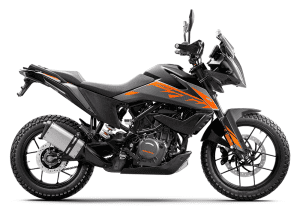
KTM 390 Adventure
$9970 ride away

Royal Enfield Himalayan
$8190 ride away
